Why is it a good idea to have one
of our personal scan tools, even for a new
vehicle? Read this story from our repair journals about a vehicle just out
of warranty, and you'll find out why ...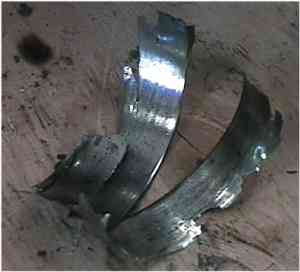
As in many cases, this 98 Dodge Ram pickup arrived under tow to our shop
with an urgent request for
us to find out what happened. The customer had described the sudden occurrence
of a loud knocking sound, at which point he had shut the engine down and
called for a tow truck. I pulled the pan off and discovered that the rod
bearings had failed, with most of the trouble originating from number 6
cylinder.
As you can see in the picture on the right, the bearing shells had worn
through to the point where they were disintegrating, causing unrecoverable
damage to the crank. All the other rod bearings were worn down and would
have failed soon.
Those bearing shells are from the number 6 rod connection. There are two pairs of
bearings arrange side by side on the crank journal. One half had deteriorated
before the other, leaving a 50 thou ridge gouged out of the crank journal,
probably the cause of the loud knocking sound. The ridge can be clearly
seen in the picture below, in the area around my thumbnail. This was the
worst case, but I could see that all the bearings were substantially worn.
As I pulled it apart further,  it
became apparent that this engine would require a new crank and more or
less a complete rebuild to bring it back to normal functionality. Since it
had just passed out of warranty (75,000 miles), I prepared a repair
estimate and discussed it with my client; he then gave us the 'go ahead'
to start the rebuild process.
it
became apparent that this engine would require a new crank and more or
less a complete rebuild to bring it back to normal functionality. Since it
had just passed out of warranty (75,000 miles), I prepared a repair
estimate and discussed it with my client; he then gave us the 'go ahead'
to start the rebuild process.
Despite receiving a new set of faulty hydraulic lifters (internal pistons
jamming, which would have blown the engine again immediately had I not
spotted the problem), I managed to get the engine removed, rebuilt and
reinstalled in less time than the factory spec of 40 hours. I then drove
the vehicle for several days to ensure that proper break-in procedure was
exercised and just to make sure everything felt like it was running
correctly. This driving period also allows the OBD computer system to
're-learn' the operational parameters so that the client gets it back in
optimized running condition.
This was also no thanks to the 'cab forward' recessed engine design which
puts the back half of the motor well into the firewall pocket. So where do
they put the distributor? In the front? On the side of the block? No, they
put it right at the back of the engine, deep in the darkest recesses of
the firewall pocket, with very little clearance for adjusting anything!
I'm not a contortionist, but I had to become one for a half a day
...
Technician's Note:
When attaching the CPS (Crank Position Sensor) at the rear of the
engine, be sure to get the stamped spacer from your Chrysler parts dealer
to set the proximity spacing relative to the internal pulse generator.
This is not mentioned in the service manual and it won't run beyond a
rough idle without it.
So why did all this happen? I can only speculate about this, as we may
never know the true cause. I looked for obvious causes, such as blocked
oil passages, oil pump failure, customer abuse, etc. but none of these
things were evident. 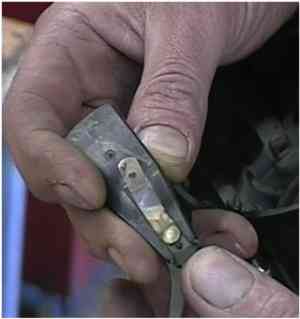 In
talking with the client, I learned that it had previously cracked a head
between the valve ports on the port bridge on one cylinder due to arcing between the
secondary coil wire and one of the plug high tension wires, caused by poor routing
separation (Chrysler has issued a TSB - Technical Service
Bulletin about this known problem).
In
talking with the client, I learned that it had previously cracked a head
between the valve ports on the port bridge on one cylinder due to arcing between the
secondary coil wire and one of the plug high tension wires, caused by poor routing
separation (Chrysler has issued a TSB - Technical Service
Bulletin about this known problem).
Thus I knew it had been previously stressed and probably overheated, which
may have contributed to the bearing failure. After talking further to my
client about some of the history of this vehicle, I learnt that while my client was away traveling, he had experienced
misfiring problems and gone into the nearest Chrysler dealer for
servicing. They were apparently very busy and not able to look at his
vehicle for five days, so he went to an independent shop where they
replaced the cap and rotor with aftermarket parts.
When I examined the
ignition cap and rotor, I found definite evidence of timing problems.
Looking at the
rotor, I found that the rivet that holds the rotor electrode in place had
become loose, allowing it to flop about with a considerable amount of
motion inside the distributor as it was running. Aside from a lot of wear, the distributor
cap had plenty of white powdery material near the contact points, a sure
sign of arcing and ozone generation. Furthermore, the carbon rotor pickup
'button' in the center of the cap was also heavily worn.
All of this adds up to the possibility of a condition known as
pre-ignition,  whereby
the spark plug fires prematurely as the piston is still coming up to TDC
(Top Dead Center). This causes a great deal of stress on the connecting
rod bearings and piston assembly as the plug is not supposed to fire until
the piston has more or less reached to top of its travel, ready to go back
down again. Essentially, it was attempting to reverse the direction of the
piston in mid-travel, creating exceptional loads on the piston assembly
(including bearings). Since this engine doesn't have a knock sensor, the
client may not have been aware of this condition.
whereby
the spark plug fires prematurely as the piston is still coming up to TDC
(Top Dead Center). This causes a great deal of stress on the connecting
rod bearings and piston assembly as the plug is not supposed to fire until
the piston has more or less reached to top of its travel, ready to go back
down again. Essentially, it was attempting to reverse the direction of the
piston in mid-travel, creating exceptional loads on the piston assembly
(including bearings). Since this engine doesn't have a knock sensor, the
client may not have been aware of this condition.
Yes, hindsight is a great thing, but our scan tool could have prevented this failure, as it would have shown
clearly that there were timing issues associated with this engine. This
would have been especially important in this case, as the engine does not
have a knock sensor and thus would not necessarily generate an OBD trouble
code, causing the 'check engine light' to come on. 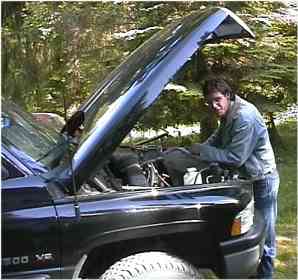 To
get an idea of the kind of detailed reporting available on your PC with
our scan tool, please see the actual sample data screens from our Toyota
Solara demo vehicle below. A relatively small investment today
can potentially save you thousands of dollars in repair bills down the
line, as was the case here. And please, don't forget we have our
online clinic facility where we are standing by
online to help you understand any problems you may be having ...
To
get an idea of the kind of detailed reporting available on your PC with
our scan tool, please see the actual sample data screens from our Toyota
Solara demo vehicle below. A relatively small investment today
can potentially save you thousands of dollars in repair bills down the
line, as was the case here. And please, don't forget we have our
online clinic facility where we are standing by
online to help you understand any problems you may be having ...
Thanks, Henry

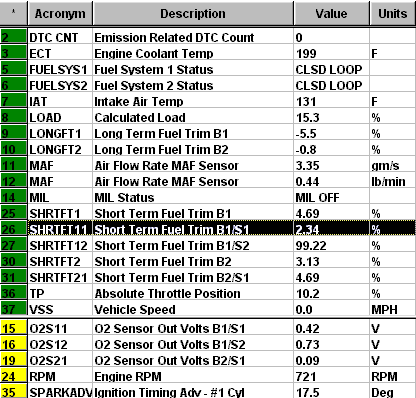
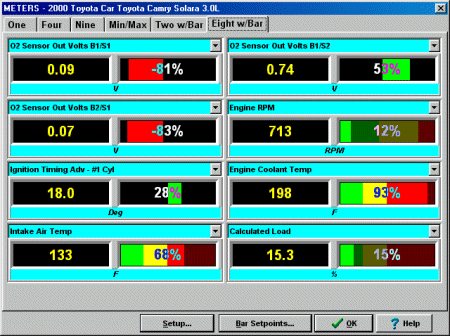



 it
became apparent that this engine would require a new crank and more or
less a complete rebuild to bring it back to normal functionality. Since it
had just passed out of warranty (75,000 miles), I prepared a repair
estimate and discussed it with my client; he then gave us the 'go ahead'
to start the rebuild process.
it
became apparent that this engine would require a new crank and more or
less a complete rebuild to bring it back to normal functionality. Since it
had just passed out of warranty (75,000 miles), I prepared a repair
estimate and discussed it with my client; he then gave us the 'go ahead'
to start the rebuild process.  In
talking with the client, I learned that it had previously cracked a head
between the valve ports on the port bridge on one cylinder due to arcing between the
secondary coil wire and one of the plug high tension wires, caused by poor routing
separation (Chrysler has issued a TSB - Technical Service
Bulletin about this known problem).
In
talking with the client, I learned that it had previously cracked a head
between the valve ports on the port bridge on one cylinder due to arcing between the
secondary coil wire and one of the plug high tension wires, caused by poor routing
separation (Chrysler has issued a TSB - Technical Service
Bulletin about this known problem). whereby
the spark plug fires prematurely as the piston is still coming up to TDC
(Top Dead Center). This causes a great deal of stress on the connecting
rod bearings and piston assembly as the plug is not supposed to fire until
the piston has more or less reached to top of its travel, ready to go back
down again. Essentially, it was attempting to reverse the direction of the
piston in mid-travel, creating exceptional loads on the piston assembly
(including bearings). Since this engine doesn't have a knock sensor, the
client may not have been aware of this condition.
whereby
the spark plug fires prematurely as the piston is still coming up to TDC
(Top Dead Center). This causes a great deal of stress on the connecting
rod bearings and piston assembly as the plug is not supposed to fire until
the piston has more or less reached to top of its travel, ready to go back
down again. Essentially, it was attempting to reverse the direction of the
piston in mid-travel, creating exceptional loads on the piston assembly
(including bearings). Since this engine doesn't have a knock sensor, the
client may not have been aware of this condition.  To
get an idea of the kind of detailed reporting available on your PC with
our scan tool, please see the actual sample data screens from our
To
get an idea of the kind of detailed reporting available on your PC with
our scan tool, please see the actual sample data screens from our 